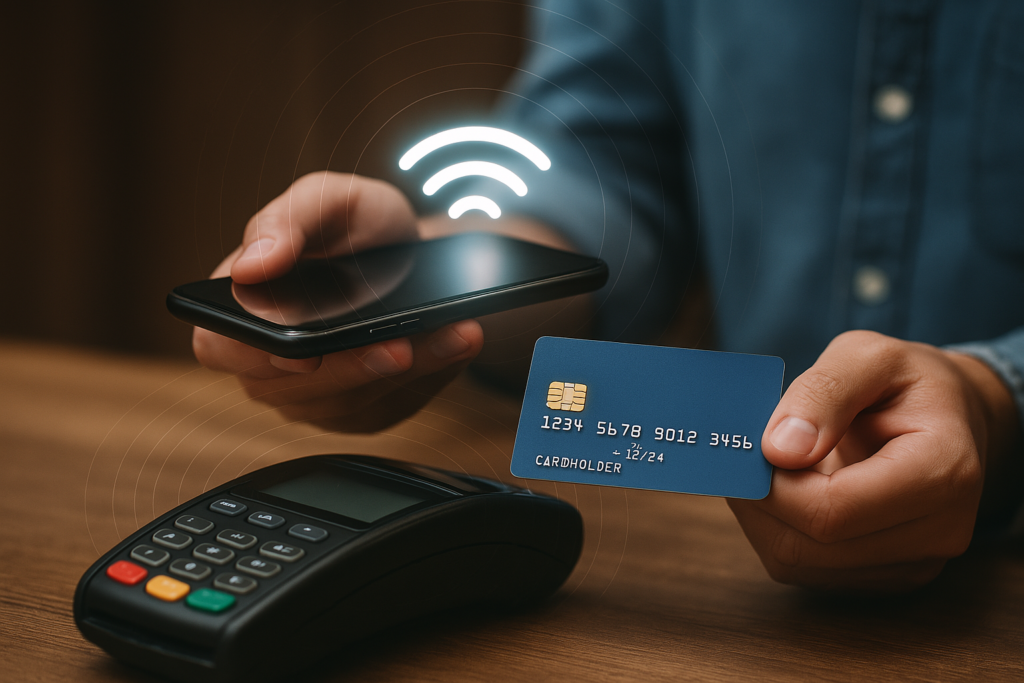The future of credit cards: Discover the innovations that will transform your shopping in the US
The way we use the traditional plastic credit card is becoming a thing of the past. That’s because the way American consumers are using credit cards is going through a transformation.
All of this is due to technological advancements and digital financial services, which are making transactions increasingly smarter, faster, and more connected to a new lifestyle. For this reason, payments are becoming more secure, quicker, and personalized, adapting to the demands of a public.
As this new scenario continues to evolve, the first step to being part of it is to understand the technological trends shaping the future of credit cards. Payment methods, digital platforms, and artificial intelligence are all becoming part of consumers’ daily routines. With that in mind, we created this content to highlight the main changes and how they are impacting the shopping experience of Americans.
Contactless payments and digital wallets dominating the market

Contactless payments are already standard in American transactions, replacing the old chip or magnetic stripe. With this technology, you simply tap your credit card or phone on the terminal to complete the purchase—no PIN is needed for lower amounts.
For higher amounts, entering a PIN is still required. In this model, convenience is combined with security, ensuring that your data isn’t exposed when making a transaction. Digital wallets like Apple Pay, Google Pay, and Samsung Pay have also gained traction with technological advancement. But what do they do?
A digital wallet allows you to add your credit card to your phone and pay without having to take your wallet out of your pocket. This payment option has followed the rise of mobile banking and reveals another side of the consumer: more connected, agile, and demanding when it comes to security.
Artificial intelligence that personalizes the consumer experience
Artificial intelligence has become important for American financial institutions. They have been working with algorithms that analyze behavioral patterns, help prevent fraud, and assist in offering products that are more aligned with each customer’s profile. This makes the entire experience safer, more efficient, and more beneficial for both parties.
In addition, AI allows offers, rewards programs, and credit limits to be adjusted dynamically. A consumer who regularly shops at specific stores or in certain categories, for example, might receive exclusive promotions tailored to those segments. Personalization strengthens the relationship between user and institution, adding value for both sides.
Biometrics and tokenization reinforce transaction security
The main concern regarding credit cards has always been security during transactions, and thanks to technology, that protection is reaching a new level. Tokenization, for instance, replaces the card’s actual data with an encrypted code that is only valid for that specific purchase. This prevents hackers from accessing the original information.
Another security feature being implemented in some credit cards is biometric authentication. Fingerprints, facial recognition, and even iris scanning are making the process faster and more secure. As a result, users feel more protected and confident when making purchases, especially online.
Comparison of key innovations by credit card issuers in the US
The leading credit card issuers in the United States are already investing in innovation to remain competitive in the market and to meet the new demands of consumers.
For that reason, integrating technologies like artificial intelligence, tokenization, and biometric authentication is already part of the strategy for these major institutions. Each bank or fintech offers solutions that reflect its value proposition—from better financial control to safer, more personalized experiences.
In this new scenario, it’s important to observe the features offered by each financial institution and how they directly impact credit card usage on a daily basis. The variety of innovation allows you, the consumer, to choose the best option—the one that’s most aligned with your profile and spending preferences.
| Issuer / Bank | Technological Innovation | Impact for the User |
|---|---|---|
| Apple Card | iOS integration and facial authentication | Fast, intuitive, and secure payment |
| Capital One | App with complete financial control | Detailed view of real-time spending |
| Chase Sapphire | AI for personalized rewards | Exclusive and relevant offers based on user profile |
| American Express | Tokenization and biometric authentication | Maximum protection against fraud |
| Discover | Flexible credit limits | Greater credit access and automatic adjustments |
The trend of sustainable and digital cards
Another trend that’s gaining more and more traction in the United States is the production of sustainable credit cards with minimal environmental impact. Financial institutions are turning to recyclable and biodegradable materials to produce their cards. This way, the consumer experience remains unchanged, but the commitment to the environment becomes stronger.
In addition, many banks are also encouraging the exclusive use of digital cards through apps and digital wallets. This reduces the need for physical materials and allows for instant card access in case of loss or theft. Digitalization also enables real-time updates without the need for physical reissuance.
What should consumers do to adapt to these changes?
To make the most of all the innovations available, it’s important to choose credit cards that are up-to-date with current technologies. That’s why checking whether your card is compatible with digital wallets, biometric authentication, and finance apps can make all the difference in your daily routine.
It’s also important to stay aware of updates from banks and fintechs. Many of these features are made available through system updates. And knowing which tools are available is the best way to ensure more control, security, and savings on your purchases.
The future of credit cards has already begun and it’s in your hands
Technological advancement is changing not only how we pay, but also how we interact with credit cards. The trends presented here point to a safer, more convenient, and more personalized future for everyday card users. Integration with mobile devices and biometric protection are just a few elements that make up this innovative and promising scenario.
Being ready for this transformation is no longer optional—it’s a necessity. Those who adopt these technologies early enjoy more comfort, protection, and savings, turning the credit card into a true ally in modern financial life. The future has arrived, and it’s right in your wallet—or your phone.
With five years of writing experience, Vivian is a graduate of a Digital Journalism MBA and passionate about football. She is now part of the content production team for finance websites.





